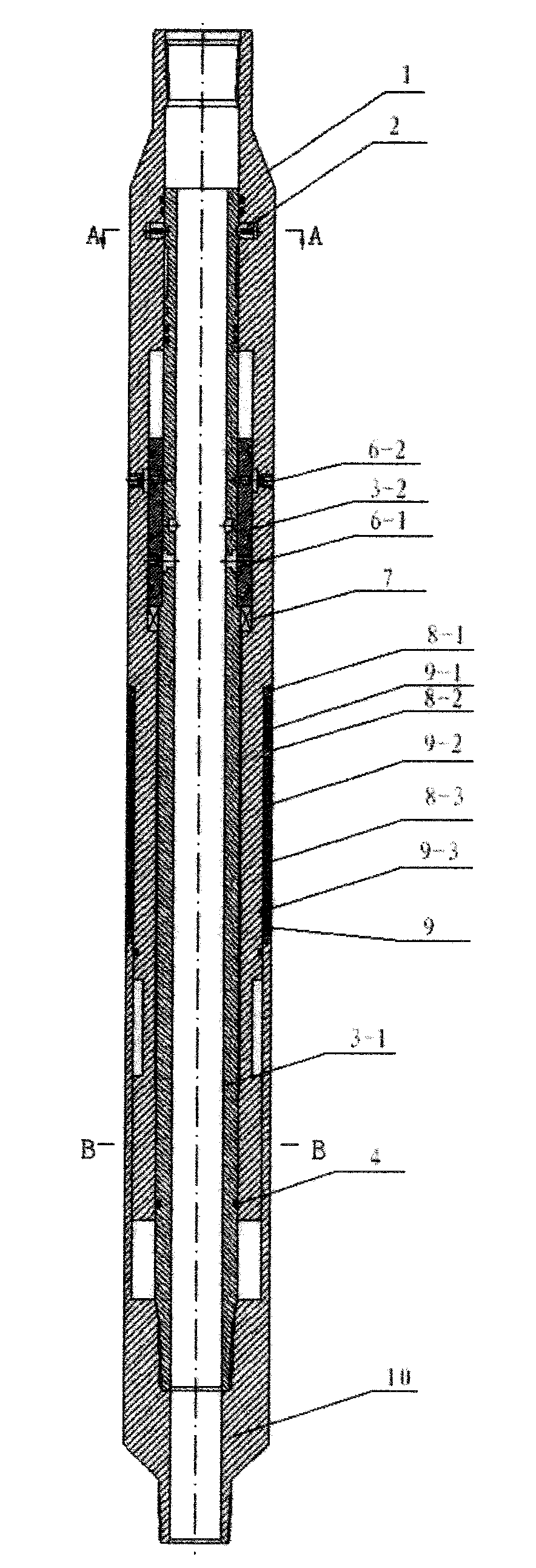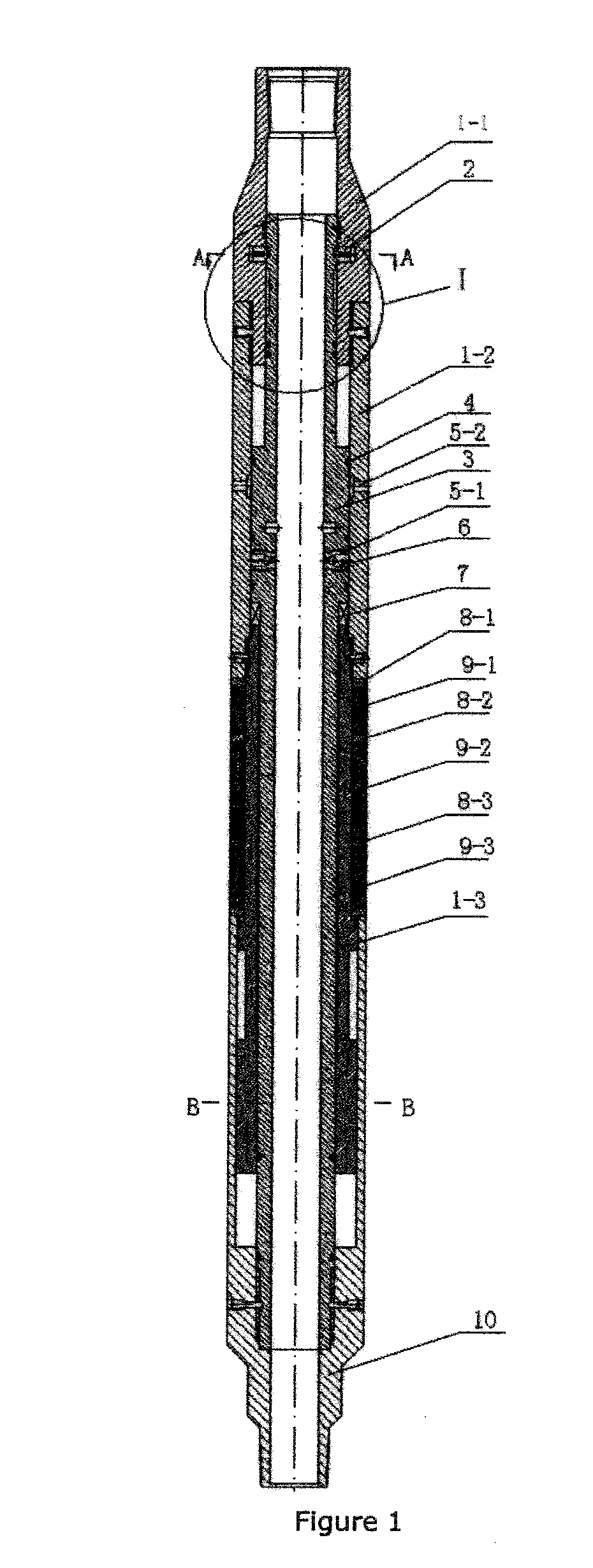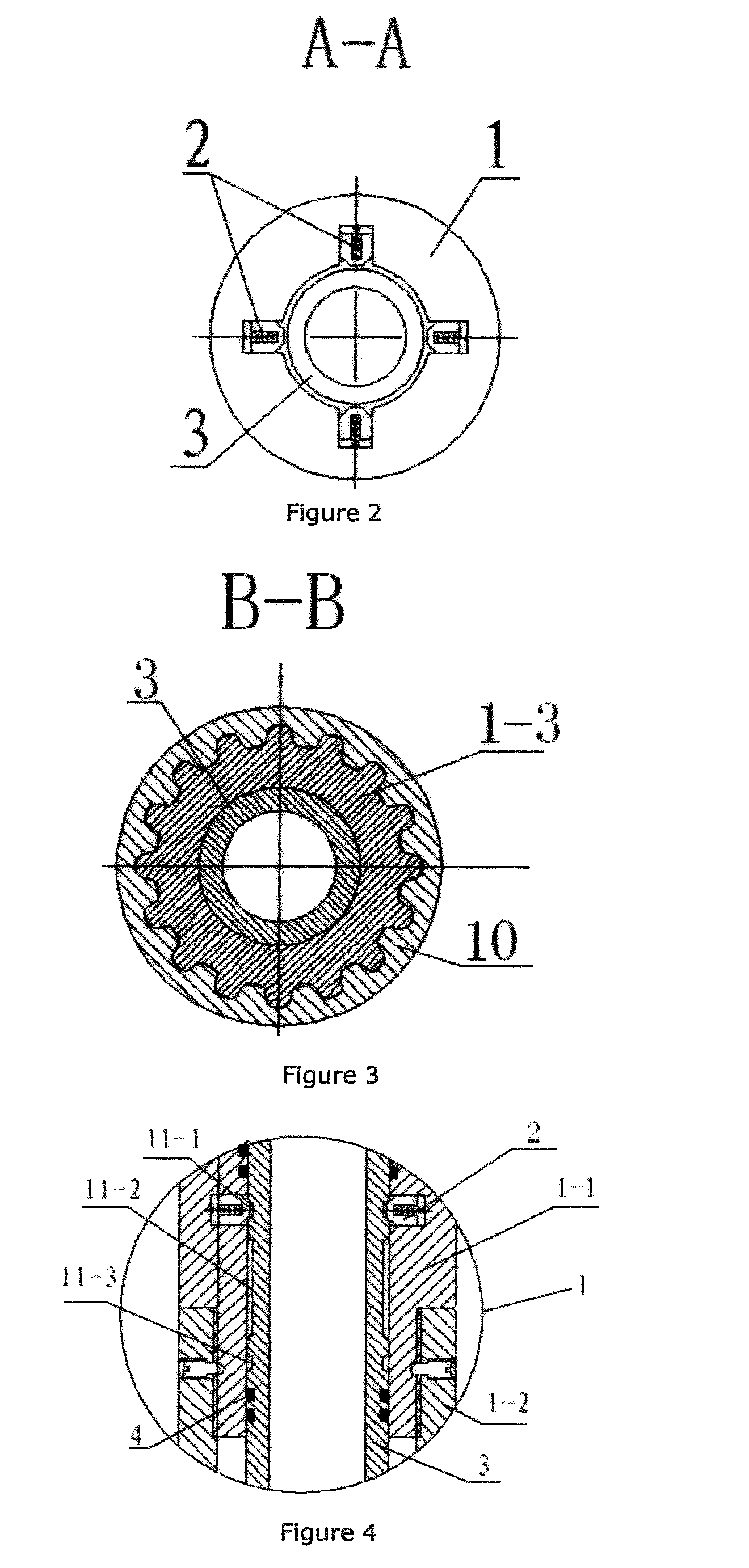Underground Annular Blowout Preventer and Assembly Process Thereof
a technology of annular blowout and assembly process, which is applied in the direction of sealing/packing, other domestic objects, and borehole/well accessories. it can solve the problems of high-pressure oil and gas from the stratum entering the well accidentally, the well kicks and blowout accidents occur, and the pressure of the high-pressure oil and gas layer is difficult to predict. it is easy to prevent the blowout, the effect of high reliability
- Summary
- Abstract
- Description
- Claims
- Application Information
AI Technical Summary
Benefits of technology
Problems solved by technology
Method used
Image
Examples
embodiment 3
[0101]Embodiment 3 is similar to the Embodiments 1 and 2, as shown in FIG. 6, the difference is as follows:
[0102]The upper connector 1-1 is integrated with the upper external sleeve 1-2 to form the upper joint component 1-a, and an inner sleeve 1-3 is fixedly connected inside the lower end of the upper joint component 1-a. The inner sleeve 1-3 is sleeved outside of the central barrel body 3-1, and lower end of the inner sleeve 1-3 is embedded between the lower joint 10 and the central barrel body 3-1. The outer wall of the lower end of the inner sleeve 1-3 is matched with the upper joint component 1-a through a spline, and the inner sleeve 1-3 can move freely relative to the lower joint 10 along the spline pair. A rubber barrel 9 is sleeved outside of the inner sleeve 1-3, and the upper end of which is embedded inside the upper joint component 1-a; therefore, both ends of the sleeve are in contact with the lower end face of the upper joint component 1-a and the upper end face of the...
PUM
| Property | Measurement | Unit |
|---|---|---|
| torque | aaaaa | aaaaa |
| pressure | aaaaa | aaaaa |
| velocity | aaaaa | aaaaa |
Abstract
Description
Claims
Application Information
 Login to View More
Login to View More - R&D
- Intellectual Property
- Life Sciences
- Materials
- Tech Scout
- Unparalleled Data Quality
- Higher Quality Content
- 60% Fewer Hallucinations
Browse by: Latest US Patents, China's latest patents, Technical Efficacy Thesaurus, Application Domain, Technology Topic, Popular Technical Reports.
© 2025 PatSnap. All rights reserved.Legal|Privacy policy|Modern Slavery Act Transparency Statement|Sitemap|About US| Contact US: help@patsnap.com



